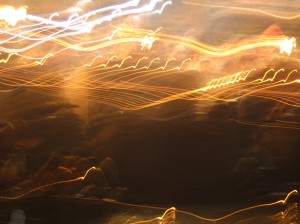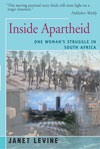On April 7, PBS broadcast a two-hour documentary “Buddha” a journey through the life and times of the historical Buddha who lived in north eastern Indian two thousand five hundred years ago. The documentary is also an introduction to his teachings. One of the commentators extols the four sites of great importance for Buddhists and anyone interested in his teachings. The Buddha was born in Lumbini on the Nepal-India border, he found enlightenment at Bodh Gaya, gave his first teaching at Sarnath (near Varanasi) and died at Kushinigar.
Varanasi, River Ganges, India (© Janet Levine, 2007)
On a month-long journey to India and Nepal in 2007, I visited all four places and many others and can attest to the power of the Buddha’s presence, nowhere more powerfully (for me) than in Bodh Gaya in remote, desolate Bihar province.
At the same time as this PBS airing was receiving notice, I was teaching the timeless novel by Hermann Hesse “Siddartha” to two sections of high school juniors. In his novel Hesse follows the journey of a fictional Indian prince, Siddartha, and cleverly illumines for western readers some of Buddhism’s key teachings. I teach this book following on a unit on “Hamlet”, a precocious Western prince struggling with all the depression, anxiety and angst that causes so much suffering in the mind structures of the human condition as we understand it in the west. This Eastern prince searches for happiness, inner peace and enlightenment. He learns to trust his own inner teacher, the same voice inside himself that is heard throughout nature and governs the universal laws that keeps the earth on its axis and the great spiral of our cosmos swirling in limitless space. He teaches the “middle way” neither too tight nor too loose. These are eastern mind structures.
Throughout the “Siddartha” reading students kept an “ideas” journal; informal, personal responses to some of the ideas they are encountering for the first time. Reading these journals is rewarding. None more so than the student who wrote of understanding one’s destiny as being a path to greatness, of being arrogant enough to unleash that greatness into the world, of knowing that every human being is capable of finding that greatness inside oneself. Buddhism teaches that this greatness is called achieving buddhahood, reflecting into the world the radiant enlightenment the Buddha achieved under the bodhi tree at Bodh Gaya. Nelson Mandela famously quoted Marilyn Williamson
“Our deepest fear is not that we are inadequate. Our deepest fear is that we are powerful beyond measure. It is our light, not our darkness that most frightens us. We ask ourselves, Who am I to be brilliant, gorgeous, talented, fabulous? Actually, who are you not to be? You are a child of God. Your playing small does not serve the world. There is nothing enlightened about shrinking so that other people won’t feel insecure around you. We are all meant to shine, as children do. We were born to make manifest the glory of God that is within us. It’s not just in some of us; it’s in everyone. And as we let our own light shine, we unconsciously give other people permission to do the same. As we are liberated from our own fear, our presence automatically liberates others.”
But the Buddha also taught that the greatness is not greatness at all but ordinariness, the ordinariness of a hot cup of tea on a frosty morning, washing the dishes, taking out the trash and seeing the moon rise. The ordinariness of the courage of getting out of bed every morning and doing what you do every day. The ordinariness of responding to a stranger’s smile. And most importantly the ordinariness of living in the present moment, of being aware to everyone and everything in every moment.





Hey, Thank you for this specific material I had been seeking all Google to be able to locate it!
Great read. Thanks for the info!
Hello, Wonderful work! Wonderful site. Thank you for this specific material I had been seeking all Yahoo to be able to locate it!
Nice post! You truly have a wonderful way of writing which I find captivating! I will definitely be bookmarking you and returning to your blog. In fact, your post reminded me about a strange thing that happened to me the other day. I’ll tell you about that later…
Good weblog! Plenty of helpful information here. I was looking for this.Thanks for sharing!
Hello, Thank you for this specific material I had been seeking all Yahoo to be able to locate it!
Hi, Wonderful article! I saw this really great post today.
Great read. Thanks for the info!
Intriguing post. I have been searching for some good resources for solar panels and discovered your blog. Planning to bookmark this one!
Hey, Great work! This is my first time i visit here. I discovered so numerous fascinating stuff in your blog.
Hi webmaster, commenters and everyone else !!! blog was absolutely wonderful!
Thanks for posting. Good to see that not everyone is using RSS feeds to build their blogs 😉
Hey very cool website!! Man .. Excellent .. Amazing .. I’ll bookmark your website and take the feeds also…I am happy to find numerous useful information here in the post, we need develop more strategies in this regard, thanks for sharing. . . . . .
You actually make it seem so easy with your presentation but I find this topic to be actually something that I think I would never understand. It seems too complicated and extremely broad for me. I am looking forward for your next post, I will try to get the hang of it!
Nice site. I was checking constantly this blog and I am impressed! Very useful information specially the last part I care for such information much.
I think this is one of the such a lot important info for me. And i’m happy studying your article. However should commentary on some common issues, The site style is wonderful, the articles is actually excellent : D. Excellent job, cheers
I always emailed this web site post page to all my associates, for the reason that if like to read it afterward my contacts will too.
This article is truly a nice one it helps new the web people, who are wishing in favor of blogging.
This article gives the light in which we can observe the reality. This is especially nice one and gives in-depth information. Thanks for this nice article. ckie Rieken
Pretty good post. I just stumbled upon your blog and wanted to say that I have really enjoyed reading your blog posts. Thanks, raine Perillo
Hi there, I found your blog via Google while looking for a related topic, your website came up, it looks great. I have bookmarked it in my google bookmarks.
Having read this I thought it was really informative. I appreciate you finding the time and energy to put this content together. I once again find myself spending way too much time both reading and posting comments. But so what, it was still worth it!
This is an excellent guide! I’m going to try this method to see if it increases the hits to Gossip Invasion.
Your mode of telling the whole thing in this paragraph
is genuinely fastidious, all can without difficulty understand it, Thanks a lot.